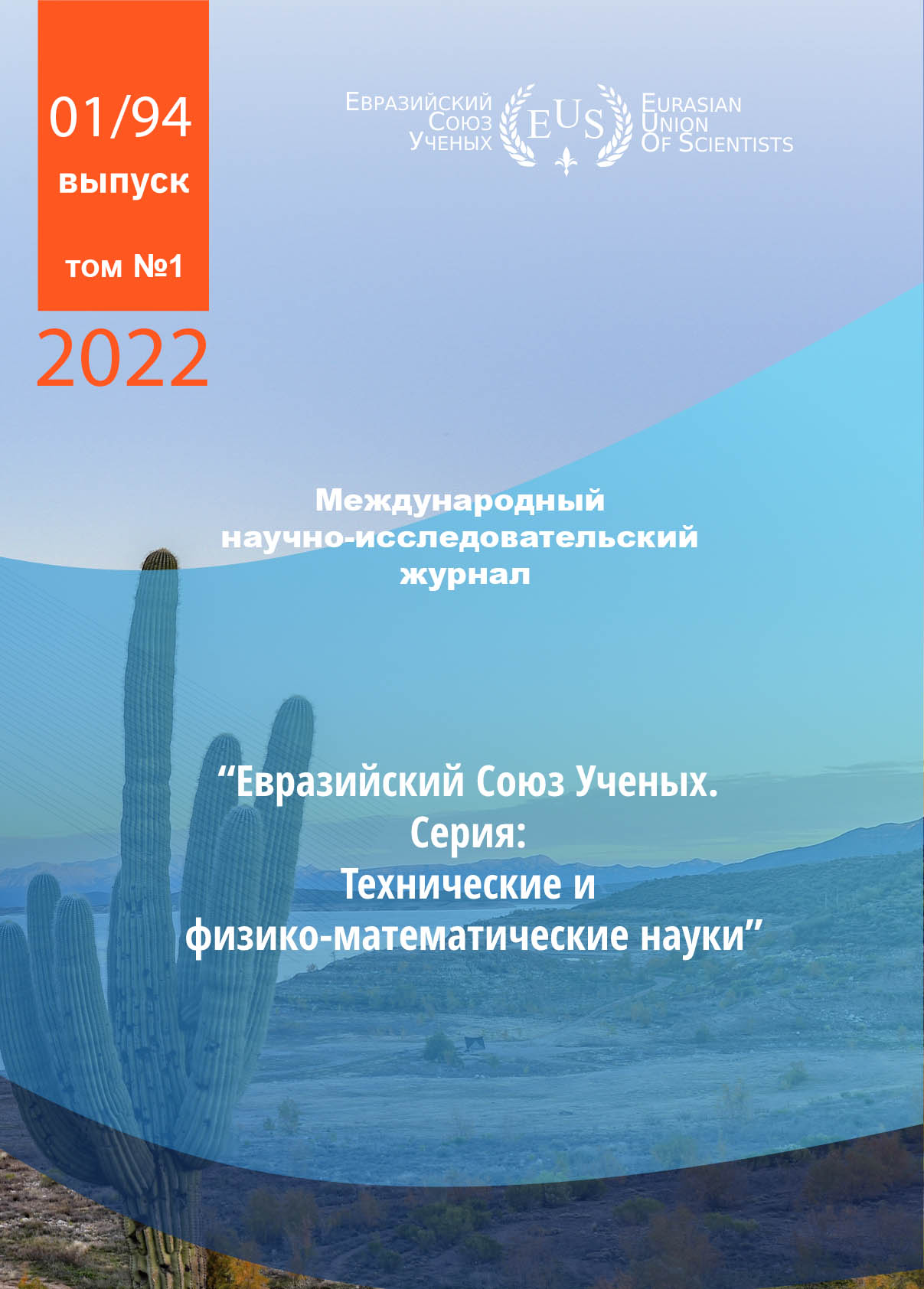SYNCHRONIZATION OF SDR-RECEIVERS FOR SOLVING THE PROBLEM OF DIRECTION FINDING OF RADIO EMISSION SOURCES
Keywords:
Direction finding, SDR-receiver, synchronization.
Abstract
The algorithm of synchronization of independent SDR-receivers intended for direction finding of radio
emission sources is considered. The device has been implemented and the synchronization algorithm has been
tested
References
[1] Liepin' U.R., Golovina L.V., Kuprij V.M. Adaptacija i sverhrazreshenie v antennyh reshetkah, rabotajushhih v srede s fluktuirujushhimi jelektrodinamicheskimi parametrami // Radiojelektronika (Izv. vyssh. uch. zaved.). – 2001. – № 2. – C. 25 – 32.
[2] Solomon I S.D., Gray D.A., Abramovic Y.M., Anderson S.I. Receiver Array calibration using disparate sources // IEEE Trans. Sign. Proc. – 1999. – Vol. 47, № 3. – P. 496 – 505.
[3] S. Malkowsky et al., ”The World’s First Real-Time Testbed for Massive MIMO: Design, Implementation and Validation,” in IEEE Access, vol. 5, pp. 9073-9088, 2017.
[4] P. Murphy, A. Sabharwal and B. Aazhang, ”Design of WARP: A wireless open-access research platform,” 2006 14th European Signal Processing Conference, Florence, 2006, pp. 1-5.
[5] M. Laakso, ”Multichannel coherent receiver on the RTL-SDR,” M.Sc. Thesis, Sch. of Electrical Engineering, Aalto Univ., Espoo, 2019. Available: https://aaltodoc.aalto.fi/handle/123456789/37163
[6] C. Liu and P. P. Vaidyanathan, ”Super Nested Arrays: Linear Sparse Arrays With Reduced Mutual Coupling—Part I: Fundamentals,” in IEEE Transactions on Signal Processing, vol. 64, no. 15, pp. 3997-4012, 1 Aug.1, 2016.
[7] R. Rajamaki and V. Koivunen, ”Comparison of Sparse Sensor Array ¨ Configurations with Constrained Aperture for Passive Sensing,” 2017 IEEE Radar Conference (RadarConf), Seattle, WA, 2017, pp. 0797- 0802.
[8] J. Vierinen, "Passive radar with $16 dual coherent channel rtl-sdr dongle receiver." Internet: http://kaira.sgo.fi/2013/09/passive-radar-with-16-ualcoherent.html, Sep. 26, 2013 [Jan. 13, 2019].
[9] T. Peltola, "Synchronized RTL-SDR Receivers." Internet: https://github.com/tejeez/rtl_coherent, Jul. 6, 2016[Sep. 29, 2018].
[10] Noori BniLam; Dennis Joosens; Jan Steckel; Maarten Weyn, “Low Cost AoA Unit for IoT Applications”, 2019 13th European Conference on Antennas and Propagation (EuCAP)
[11] L. Sliwczynski, "Zener diode and MMICs produce true broadband noise." Internet: https://www.edn.com/design/test-andmeasurement/4358938/Zener-diode-and-MMICsproduce-true-broadband-noise, Oct. 14, 1999 [Oct. 3,2018]
[2] Solomon I S.D., Gray D.A., Abramovic Y.M., Anderson S.I. Receiver Array calibration using disparate sources // IEEE Trans. Sign. Proc. – 1999. – Vol. 47, № 3. – P. 496 – 505.
[3] S. Malkowsky et al., ”The World’s First Real-Time Testbed for Massive MIMO: Design, Implementation and Validation,” in IEEE Access, vol. 5, pp. 9073-9088, 2017.
[4] P. Murphy, A. Sabharwal and B. Aazhang, ”Design of WARP: A wireless open-access research platform,” 2006 14th European Signal Processing Conference, Florence, 2006, pp. 1-5.
[5] M. Laakso, ”Multichannel coherent receiver on the RTL-SDR,” M.Sc. Thesis, Sch. of Electrical Engineering, Aalto Univ., Espoo, 2019. Available: https://aaltodoc.aalto.fi/handle/123456789/37163
[6] C. Liu and P. P. Vaidyanathan, ”Super Nested Arrays: Linear Sparse Arrays With Reduced Mutual Coupling—Part I: Fundamentals,” in IEEE Transactions on Signal Processing, vol. 64, no. 15, pp. 3997-4012, 1 Aug.1, 2016.
[7] R. Rajamaki and V. Koivunen, ”Comparison of Sparse Sensor Array ¨ Configurations with Constrained Aperture for Passive Sensing,” 2017 IEEE Radar Conference (RadarConf), Seattle, WA, 2017, pp. 0797- 0802.
[8] J. Vierinen, "Passive radar with $16 dual coherent channel rtl-sdr dongle receiver." Internet: http://kaira.sgo.fi/2013/09/passive-radar-with-16-ualcoherent.html, Sep. 26, 2013 [Jan. 13, 2019].
[9] T. Peltola, "Synchronized RTL-SDR Receivers." Internet: https://github.com/tejeez/rtl_coherent, Jul. 6, 2016[Sep. 29, 2018].
[10] Noori BniLam; Dennis Joosens; Jan Steckel; Maarten Weyn, “Low Cost AoA Unit for IoT Applications”, 2019 13th European Conference on Antennas and Propagation (EuCAP)
[11] L. Sliwczynski, "Zener diode and MMICs produce true broadband noise." Internet: https://www.edn.com/design/test-andmeasurement/4358938/Zener-diode-and-MMICsproduce-true-broadband-noise, Oct. 14, 1999 [Oct. 3,2018]
Published
2022-02-17
How to Cite
Nguyen, Van Hai, and Tien Thai Nguyen. 2022. “SYNCHRONIZATION OF SDR-RECEIVERS FOR SOLVING THE PROBLEM OF DIRECTION FINDING OF RADIO EMISSION SOURCES”. EurasianUnionScientists, February, 03-08. https://fizmat-tech.euroasia-science.ru/index.php/Euroasia/article/view/797.
Section
Article
CC BY-ND
A work licensed in this way allows the following:
1. The freedom to use and perform the work: The licensee must be allowed to make any use, private or public, of the work.
2. The freedom to study the work and apply the information: The licensee must be allowed to examine the work and to use the knowledge gained from the work in any way. The license may not, for example, restrict "reverse engineering."
2. The freedom to redistribute copies: Copies may be sold, swapped or given away for free, in the same form as the original.





